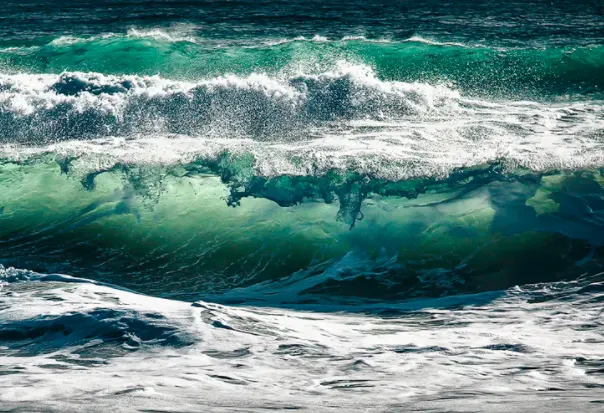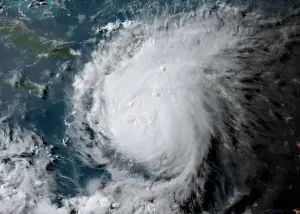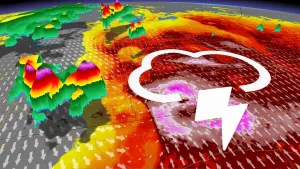
Oceans generate large amounts of clean energy, here are the pros and cons
Ocean waves release a tremendous amount of energy and scientists say that there is a significant potential to expand this abundant and reliable resource.
Generating electricity from wind and the Sun is becoming increasingly common as the world strives to provide millions with clean energy, without polluting the atmosphere.
But solar and wind power also have limitations because they are not always available. The Sun only provides energy during the day and the wind comes and goes. There are not many places in the world where wind is continuous enough to generate unlimited energy and as easy as it may sound, storing energy for later use has proven to be a great challenge.
A less known way to generate clean energy is through the movement of water, specifically in the form of undulating waves that rise and fall across our oceans. Unlike solar and wind energy, the mechanism of energy generation from waves is persistent — while the Sun sets and the wind tapers off, the oceans continue to churn. However, the technology we use to harvest these waves has ample room for improvement.

Wave energy farm in Peniche, Portugal, generates electricity and delivers it to the national grid. Credit: AW-Energy Oy/ Wikimedia Commons. (CC BY 3.0)
Waves are created when wind blows across a water surface and wave power systems use the movement of water to produce electricity. Some devices take advantage of the force of the breaking waves, others take advantage of the swells, and some even use the pressure of waves near the ocean floor.
There is a good number of pros in using waves to generate clean energy, but also a number of cons that need to be considered. Let’s take a deep dive into the details of this abundant energy source.
THE PROS:
There are always waves breaking on the shore, which makes wave energy renewable and inexhaustible.
Wave energy can be fed directly to electricity-generating machinery and used to supply nearby generators and power plants.
Wave energy exists in proximity to places that can use it; most of the world’s big cities and ports are close to the ocean and can harness the power of the waves for their use.
There are a variety of ways to harvest wave energy: From power plants installed with hydraulic turbines, to marine vessels equipped with large structures that are deposited in the sea to collect their energy.
One of the main advantages of wave energy over other alternative energy sources is that it can be easily predicted; the quantity of energy that can be produced can be calculated quite accurately.
Unlike the impact fossil fuels have on the Earth's surface, wave energy does not cause any damage on land. It is safe, clean, and one of the preferred methods of extracting energy from the ocean.
Wave energy is a reliable source of energy since the ocean is constantly in motion. The average movement of waves is usually quite constant and therefore the energy generated can be used continuously. There can be seasonal and annual variations, but it always exists as a source of energy.

Credit: Peter Fogden via Unsplash
THE CONS:
The biggest disadvantage of obtaining energy from waves is location, only power plants and cities near the ocean will directly benefit from its potential.
Generating energy from waves can be dangerous for some nearby species. Machinery can alter the seabed, change habitats near the coast, and generate noise pollution. There is also some risk of spilling toxic chemicals into the water.
Another drawback is that it disturbs commercial and private vessels. Power plants that harvest wave energy should be located along the coast to optimize their work, and should be close to cities and other populated areas to be of maximum utility.
Produced wave energy depends largely on the length of the wave. Wave speed and the density of the water also determine the amount of energy that can be generated. All these elements can be variable and cause uncertainty about how much energy will actually be available.
Wave energy performance drops significantly in adverse weather conditions.
Wave power generators can be unsightly for those who live near the shore. They also generate noise pollution, although the noise is usually less than the sound of the waves themselves.
The cost of the technology used to harness wave energy is still high. Furthermore, the useful life of such technology is limited and its maintenance is frequent.
After considering both the advantages and disadvantages of wave energy, the future of this technology is certainly positive and may turn out to be an ideal solution to generating electricity. It is an energy alternative that has a tremendous potential despite some of the aforementioned limitations.
Thumbnail credit: Leo Roomets via Unsplash











